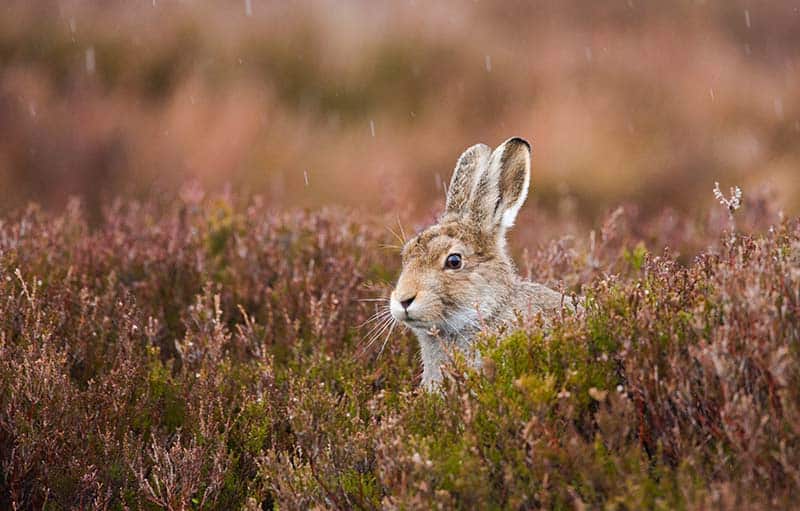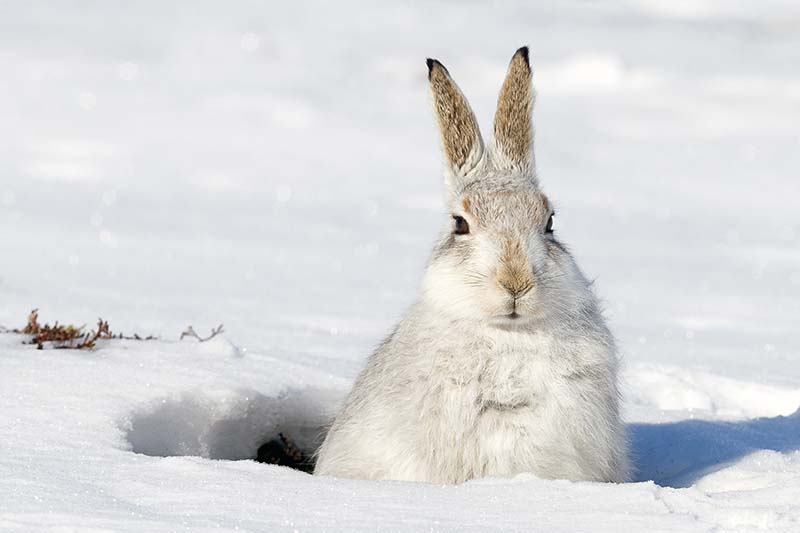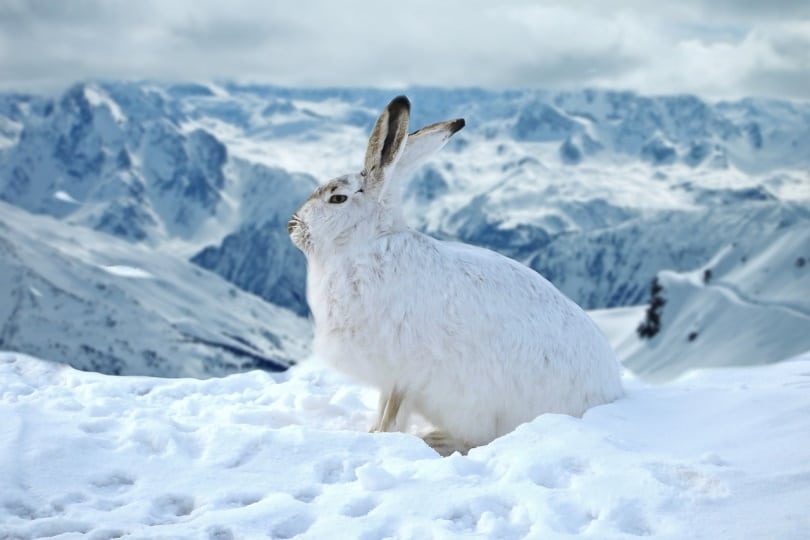Hares and jackrabbits are close relatives to rabbits and look almost identical, with long ears and legs. They can often be spotted in the wilderness, especially the Mountain Hare with its unique snowy white fur. While the Mountain Hare’s snowy fur is distinctive to us, it is an amazing camouflage from other predators. There are many interesting facts about the Mountain Hare, so read on below to learn more.
| Size: | Large |
| Weight: | Up to 7.7 pounds |
| Lifespan: | 3–4 years |
| Similar Breeds: | Snowshoe, Arctic hare |
| Suitable for: | Unsuitable as pets |
| Temperament: | Nervous, cautious, social (with other rabbits) |
The Mountain Hare is a large species, although smaller than the popular Brown Hare. They are famous for their stunning white coat color, which comes alive with the winter snow but during summer and spring, their fur is dark brown to match their surroundings. They are masters of camouflage and speed and agility—with their long hindlegs, most hare species are very fast and agile.
Mountain Hare Breed Characteristics
[yasr_multiset setid=7]
Temperament & Intelligence of the Mountain Hare
The Mountain Hare is a species adapted to living in mountainous and even polar habitats. They are nocturnal animals, so you can expect them to hide and rest during the day in depressions in the snow, while during the night, they come out to feed. These hares are incredibly social, especially during cold winter days when they find shelter and feed in groups. They are very sensitive and cautious of their surroundings and will flee the scene at any sign of danger in a brilliant zig-zag motion.


Things to Know About the Mountain Hare
While the Mountain Hare spends all its life free in the wilderness, there are still some interesting facts to learn about their lifestyle. While we can’t take care of Mountain Hares ourselves, we can learn how they find their way in the wild.
Food & Diet Requirements
Mountain hares, just like other rabbits, are herbivores, feeding primarily on grass, twigs, bark, lichen, and leaves. Their diets depend primarily on the time of year and the season, depending on what they can find in the wild. These rabbits have learned how to adapt to specific environments allowing them to find food in almost any season. During winter, when all other plants are buried in the snow, hares will mostly rely on heather as their primary source of food.
Appearance
These species are one of the very few hares that, before winter, molt their old summer coat. Their summer coat is characterized by a dark gray-brown color, with tinges of blue to provide them with the perfect camouflage. When winter comes, these hares strip their old summer fur to reveal a gorgeous, stunning white coat. This white coat helps them match the snowy backdrop and is what these rabbits are mostly famous for.

Lifespan and Health Conditions
While the Mountain Hare generally has very good health, they are considered very vulnerable. Due to recent climate changes, they have been ranked “high” on the vulnerability scale. Since these rabbits live in the wilderness only, their lifespan is only around 4 years. They are prey to many animals and are always in danger in the wilderness, so this lifespan is decent considering their living conditions.
- Intestinal parasites
- Louping ill virus
- Toxoplasmosis
- European brown hare syndrome (EBHS)

Male vs. Female
Males and females are very similar in size so unless you can see the male testicles, which can sometimes recede, there is really no easy way to tell the difference. Unlike other mammal species, male hares or jackrabbits don’t have the tendency to fight over female hares or jills. While hares usually mate during spring and summer, if a jackrabbit hasn’t found a mate by the time fall comes, their testicles will recede, and they’ll lose interest. If a female hare has more than one suitor, she will sometimes fight the males to test them and their strength before deciding on her perfect mating partner. The females get to choose when they mate, which is perfectly aligned with their induced ovulations—they begin ovulating once they start mating.
3 Little-Known Facts About the Mountain Hare
1. During winter, the hindlegs of Mountain hares develop significantly more fur, giving them the effect of snowshoes.
2. Certain hare species tend to “box” with the opposite gender during mating season.
3. With recent changes in climate, some Mountain Hares are changing their coat color too soon, exposing them to predators.

Final Thoughts
These gorgeous animals live in the wilderness their entire lives and are usually quite social, especially to help them survive winter. Their unique lifestyles don’t allow them to be domesticated, so their average lifespan is around 4 years. They exhibit some incredible behavior, especially during mating season. Even though these rabbits are not meant to be kept as pets, we can admire their free spirits in the wild.
- Related Read: Types of Hare Species (With Pictures)
Featured Image Credit: ErikaWittlieb, Pixabay
